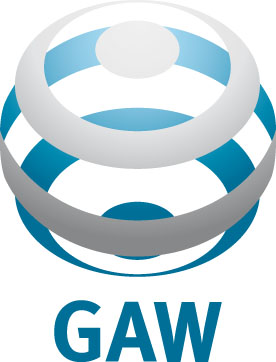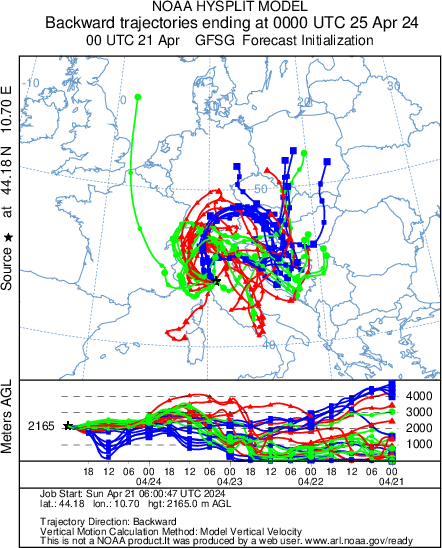Halogenated gases (CFCs, HFCFs, HFCs)
Starting date: 1-6-2003
Status: Running
Instrumentation and calibration: Halogenated gases measurements are performed by a GC-MS analyser (Agilent GC6850/MS5975C) coupled with a preconcentration&thermal desorber unit (Unity2 – Markes Iternational). One liter air samples are collected on a adsorbing trap at -30°C and desorbed into the chromatographic column. One entire measurement tooks one hour and the air sample measurements are alternated by working standard measurements in order to detect and correct short-term instrument sensitivity fluctuations. Calibration of working standard is performed every month with the same instrument but comparing with a Gold Standard, a tank filled and calibrated at Mace Head station by University of Bristol, in the frame of the AGAGE network. All the concentration are reported in the SIO05 / SIO07 /UB98 scale, depending on compounds The following compounds are currently observed and analysed at the ICO-OV: • CFCs: CFC-11, CFC-12, CFC-113, CFC-114, CFC-115. • HCFCs: HCFC-22, HCFC-141b, HCFC-142b, HCFC-124. • Halons H-1301, H-1211. • CH3Cl, CH3Br, CH3I, CH2Cl2, CH2Br2, CHCl3, CHBr3, CH3,CCl3,, CCl4, TCE, PCE. • HFCs: HFC-23, HFC-32, HFC-134a, HFC-152a, HFC-125, HFC-143a, HFC-365mfc. • PFC and other fluorinated compounds: PFC-116, PFC-218. • Hydorcarbons: C3 – C6 hydrocarbons Present: AGAGE, SHARE, GAW-WMO Past: SOGE, SOGE-A
Related research programmes
- Tropospheric background condition
- Greenhouse gases
- Long-range transport
- Local and regional pollution source identification
- Stratospheric intrusions
Why is this research important? -To develop a long-term European observation system to measure almost all of the important gases species in the Montreal Protocol (e.g. CFCs and HCFCs) to protect the ozone layer and most of the significant non-CO2 gases in the Kyoto Protocol (e.g. HFCs) involved in the atmospheric radiative forcing and climate change. -To accurately document the global distributions and temporal behavior of the biogenic/anthropogenic gases CH3Cl, CH3Br, CH2Cl2, and CHCl3. -To provide an accurate data base on the rates of accumulation of trace gases over the globe which can be used to test the synoptic-, regional- and global-scale circulation predicted by three dimensional models and/or to determine characteristics of the sources of these gases near the stations.
Quick look Concentration of selected halocarbons observed at ICO-OV are reported for period 2002 - 2011:
Organization (s): Urbino University Dipartimento di Scienza di Base e Fondamenti piazza Rinascimento 6, I-61029, Urbino ISAC-CNR Via Gobetti 101, I-40129, Bologna www.isac.cnr.it
Contact persons: Prof. Michela Maione e-mail: michela.maione [at] uniurb.it phone: +39 0722 303316
Dr. Jgor Arduini e-mail: jgor.arduini [at] uniurb.it phone: +39 0722 303316
Dr. Paolo Bonasoni e-mail: p.bonasoni [at] isac.cnr.it, phone: +39 051 6399590
Where can I find the data? World Data Centre for Greenhouse Gases (WDCGG) or by direct request to: michela.maione [at] uniurb.it, jgor.arduini [at] uniurb.it






